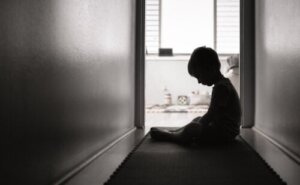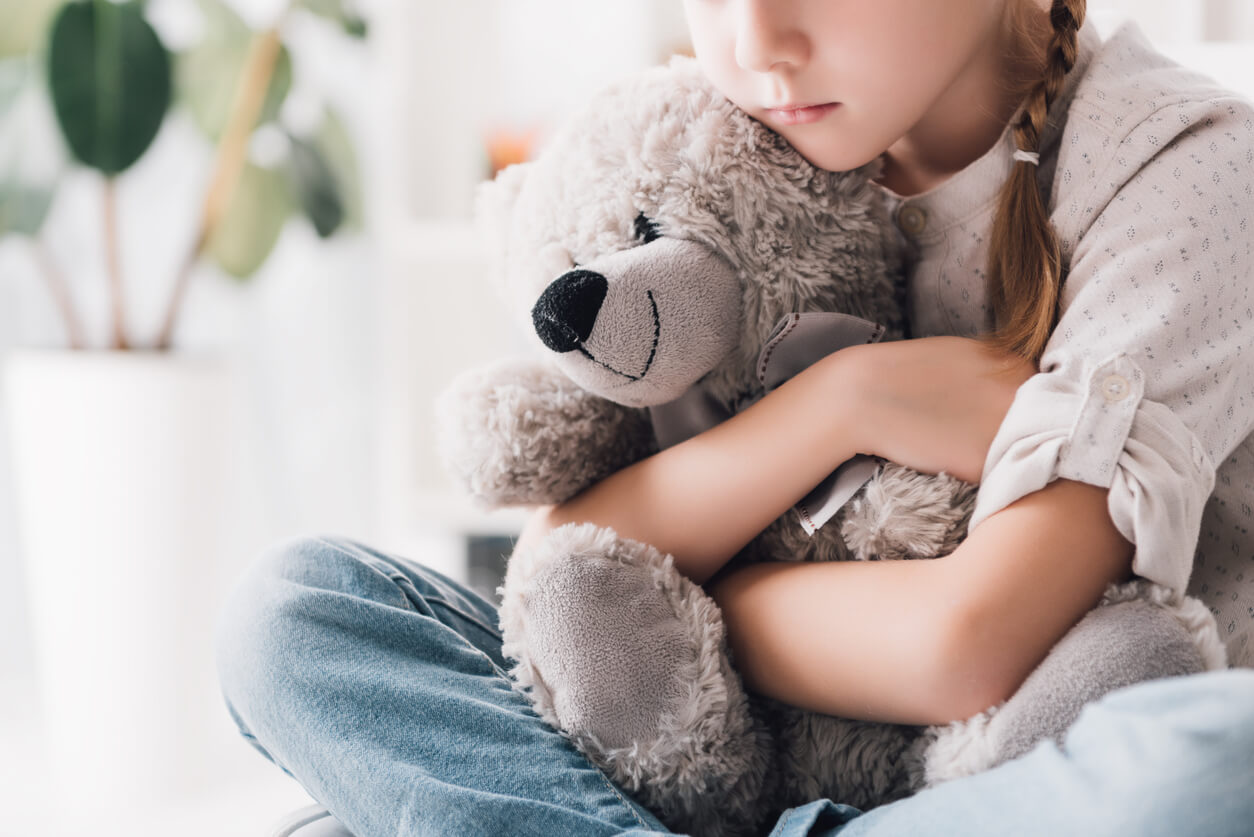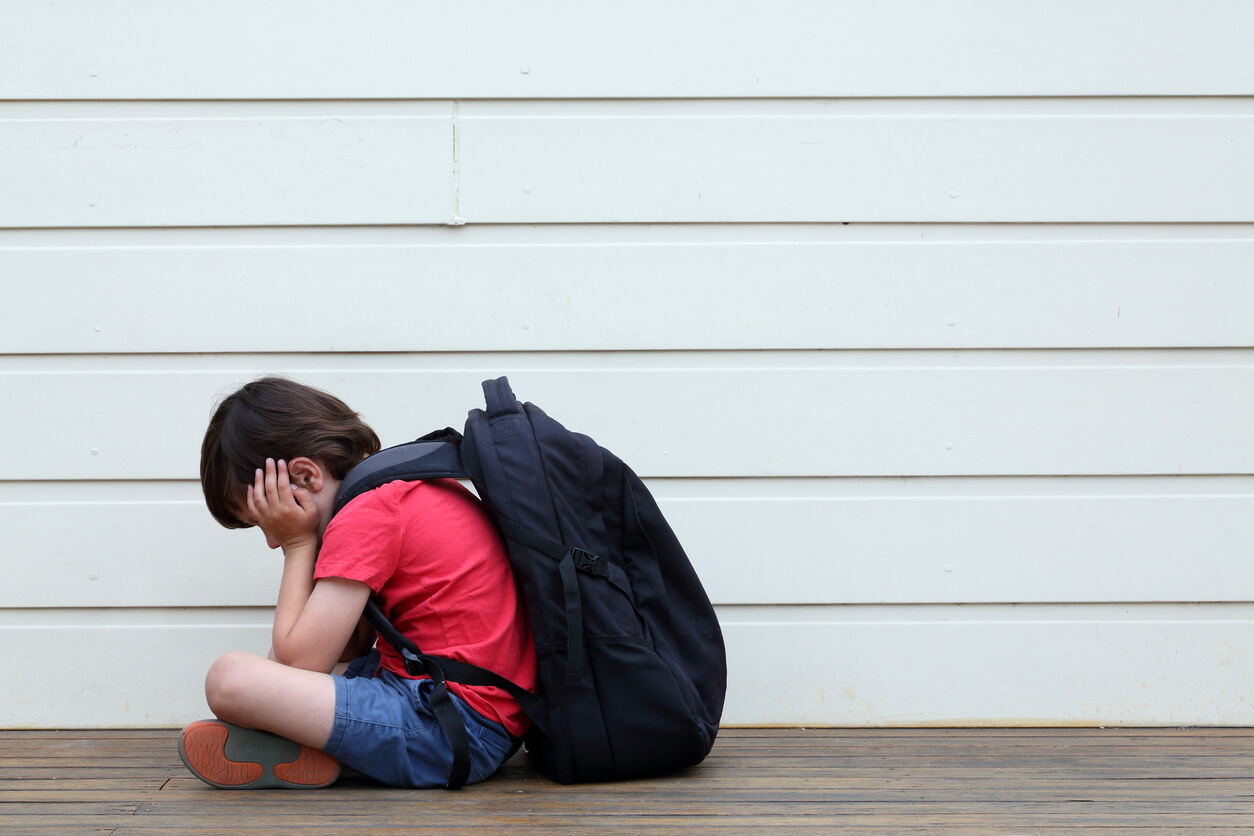Loneliness in Children: Causes and Consequences


Written and verified by the psychologist Mara Amor López
Loneliness in children can be much more dangerous than we imagine. We all need social relationships to be in balance. Without these contacts, our mental and physical health deteriorates drastically. When a child or adult feels lonely, their body secretes an excess of the stress hormone, and we already know that this isn’t good for anyone.
Loneliness can become a serious problem and deteriorate the health of children. In this regard, it decreases their ability to learn, their memory, and their concentration, while increasing sadness, feelings of isolation, and distress. This excess stress can even cause problems in the arteries and heart.
As you can see, feeling alone isn’t good at all. Rather, it’s very dangerous and we must prevent it from happening to our children. To do this, it’s important to act and intervene in time. In this article, we’ll tell you more about the causes and consequences of loneliness in children.
What can be the causes of loneliness in children?
Loneliness in children can be due to different causes. This feeling can occur not only in the school environment but also for other reasons. Let’s take a look at some of them:
- Problems and conflicting relationships in the family and home
- Suffering the separation of parents
- Losing a friend because they’ve moved to another city
- A transfer or move of the child to another school or city
- The loss of a loved one or pet
- The death of a significant person or pet
- Rejection by peers
- Having problems relating socially, because they lack the necessary skills to do so
- Difficulties in relating due to the child’s personality (excessive shyness, anxiety, low self-esteem, insecurity, among others)
- Suffering from bullying by peers
- Rejection by their group of friends

What are the consequences of loneliness in children?
All of us, at some point in our lives, have felt lonely, as it’s a normal situation in different circumstances. However, the problem appears when this feeling becomes chronic, which is completely different from feeling it on a passing occasion. In the case of children, when they have chronic or persistent loneliness, there can be many problems that arise around them.
The negative consequences can be immediate or long-term. Some of these may be the following:
- Development of delinquent or antisocial behaviors.
- Dropping out of school Lack of total connection with their peers.
- They feel marginalized and their behaviors are based on this feeling.
- Continuous mood swings.
- Feelings of sadness or anguish.
- Constant boredom.
- Learning problems in class.
- Difficulty concentrating.
- Childhood anxiety.
- Feelings of loneliness that may eventually accompany them into adulthood.
- Lack of skills that are important for lifelong relationships.
- Self-esteem problems.
- Feelings of emptiness.
- Mental problems such as alienation.
Observing and assessing children’s behaviors
It’s important that we observe children carefully to see what type of loneliness they’re experiencing so that we can seek a solution as soon as possible. Some factors to take into account are the following:
- Loneliness in the child occurs constantly
- They don’t show any interest in their environment.
- They’re anxious, shy, sad, and unsure of themselves
- They have the necessary social skills to initiate relationships but refuse to use them
- Parents often make them feel like a victim
When observing and assessing children, it’s critical that we’re aware of and sensitive to their personal abilities and preferences. For example, it may be thought that a preschooler who plays alone may be more at risk for social and cognitive problems later in life. However, there are many children in this age group who play alone or with non-social activities and this isn’t a problem for them.
Therefore, it’s important for the teacher to observe them over time. In this way, they can see their interactions with other peers, talk to them about their feelings, and note their behaviors and responses to conclude whether they’re lonely or happy.

Observe the child’s behaviors
As we’ve seen, loneliness in children can be dangerous, but only if it’s chronic and doesn’t occur on a constant basis. It’s therefore important to observe the child’s behavior, both at home and at school. This way, you’ll be able to conclude if this feeling is something circumstantial due to an event that has happened or if it’s a bigger problem.
Children’s behaviors are indicators of their moods and how they feel. For this reason, it’s essential to assess whether children are happy or, on the contrary, they’re uninterested, anxious, or sad on a continuous basis. This evaluation will be key to finding a solution as soon as possible, in case there’s a problem. Also, if necessary, it’s important to seek professional help.
Loneliness in children can be much more dangerous than we imagine. We all need social relationships to be in balance. Without these contacts, our mental and physical health deteriorates drastically. When a child or adult feels lonely, their body secretes an excess of the stress hormone, and we already know that this isn’t good for anyone.
Loneliness can become a serious problem and deteriorate the health of children. In this regard, it decreases their ability to learn, their memory, and their concentration, while increasing sadness, feelings of isolation, and distress. This excess stress can even cause problems in the arteries and heart.
As you can see, feeling alone isn’t good at all. Rather, it’s very dangerous and we must prevent it from happening to our children. To do this, it’s important to act and intervene in time. In this article, we’ll tell you more about the causes and consequences of loneliness in children.
What can be the causes of loneliness in children?
Loneliness in children can be due to different causes. This feeling can occur not only in the school environment but also for other reasons. Let’s take a look at some of them:
- Problems and conflicting relationships in the family and home
- Suffering the separation of parents
- Losing a friend because they’ve moved to another city
- A transfer or move of the child to another school or city
- The loss of a loved one or pet
- The death of a significant person or pet
- Rejection by peers
- Having problems relating socially, because they lack the necessary skills to do so
- Difficulties in relating due to the child’s personality (excessive shyness, anxiety, low self-esteem, insecurity, among others)
- Suffering from bullying by peers
- Rejection by their group of friends

What are the consequences of loneliness in children?
All of us, at some point in our lives, have felt lonely, as it’s a normal situation in different circumstances. However, the problem appears when this feeling becomes chronic, which is completely different from feeling it on a passing occasion. In the case of children, when they have chronic or persistent loneliness, there can be many problems that arise around them.
The negative consequences can be immediate or long-term. Some of these may be the following:
- Development of delinquent or antisocial behaviors.
- Dropping out of school Lack of total connection with their peers.
- They feel marginalized and their behaviors are based on this feeling.
- Continuous mood swings.
- Feelings of sadness or anguish.
- Constant boredom.
- Learning problems in class.
- Difficulty concentrating.
- Childhood anxiety.
- Feelings of loneliness that may eventually accompany them into adulthood.
- Lack of skills that are important for lifelong relationships.
- Self-esteem problems.
- Feelings of emptiness.
- Mental problems such as alienation.
Observing and assessing children’s behaviors
It’s important that we observe children carefully to see what type of loneliness they’re experiencing so that we can seek a solution as soon as possible. Some factors to take into account are the following:
- Loneliness in the child occurs constantly
- They don’t show any interest in their environment.
- They’re anxious, shy, sad, and unsure of themselves
- They have the necessary social skills to initiate relationships but refuse to use them
- Parents often make them feel like a victim
When observing and assessing children, it’s critical that we’re aware of and sensitive to their personal abilities and preferences. For example, it may be thought that a preschooler who plays alone may be more at risk for social and cognitive problems later in life. However, there are many children in this age group who play alone or with non-social activities and this isn’t a problem for them.
Therefore, it’s important for the teacher to observe them over time. In this way, they can see their interactions with other peers, talk to them about their feelings, and note their behaviors and responses to conclude whether they’re lonely or happy.

Observe the child’s behaviors
As we’ve seen, loneliness in children can be dangerous, but only if it’s chronic and doesn’t occur on a constant basis. It’s therefore important to observe the child’s behavior, both at home and at school. This way, you’ll be able to conclude if this feeling is something circumstantial due to an event that has happened or if it’s a bigger problem.
Children’s behaviors are indicators of their moods and how they feel. For this reason, it’s essential to assess whether children are happy or, on the contrary, they’re uninterested, anxious, or sad on a continuous basis. This evaluation will be key to finding a solution as soon as possible, in case there’s a problem. Also, if necessary, it’s important to seek professional help.
All cited sources were thoroughly reviewed by our team to ensure their quality, reliability, currency, and validity. The bibliography of this article was considered reliable and of academic or scientific accuracy.
- Gonzaga-López, M. G., Valdez-Medina, J. L., & de Oca, Y. P. A. M. SOLEDAD EN NIÑOS. FACULTAD DE CIENCIAS DE LA CONDUCTA, 81.
-
López Quintero, M. D. R., & Pérez Nieto, E. P. Construcción y validación inicial de un instrumento para evaluar percepción de soledad en niños y adolescentes (Bachelor’s thesis, Universidad de La Sabana).
-
Carvajal-Carrascal, G., & Caro-Castillo, C. V. (2009). Soledad en la adolescencia: análisis del concepto. Aquichan, 9(3), 281-296.
This text is provided for informational purposes only and does not replace consultation with a professional. If in doubt, consult your specialist.








